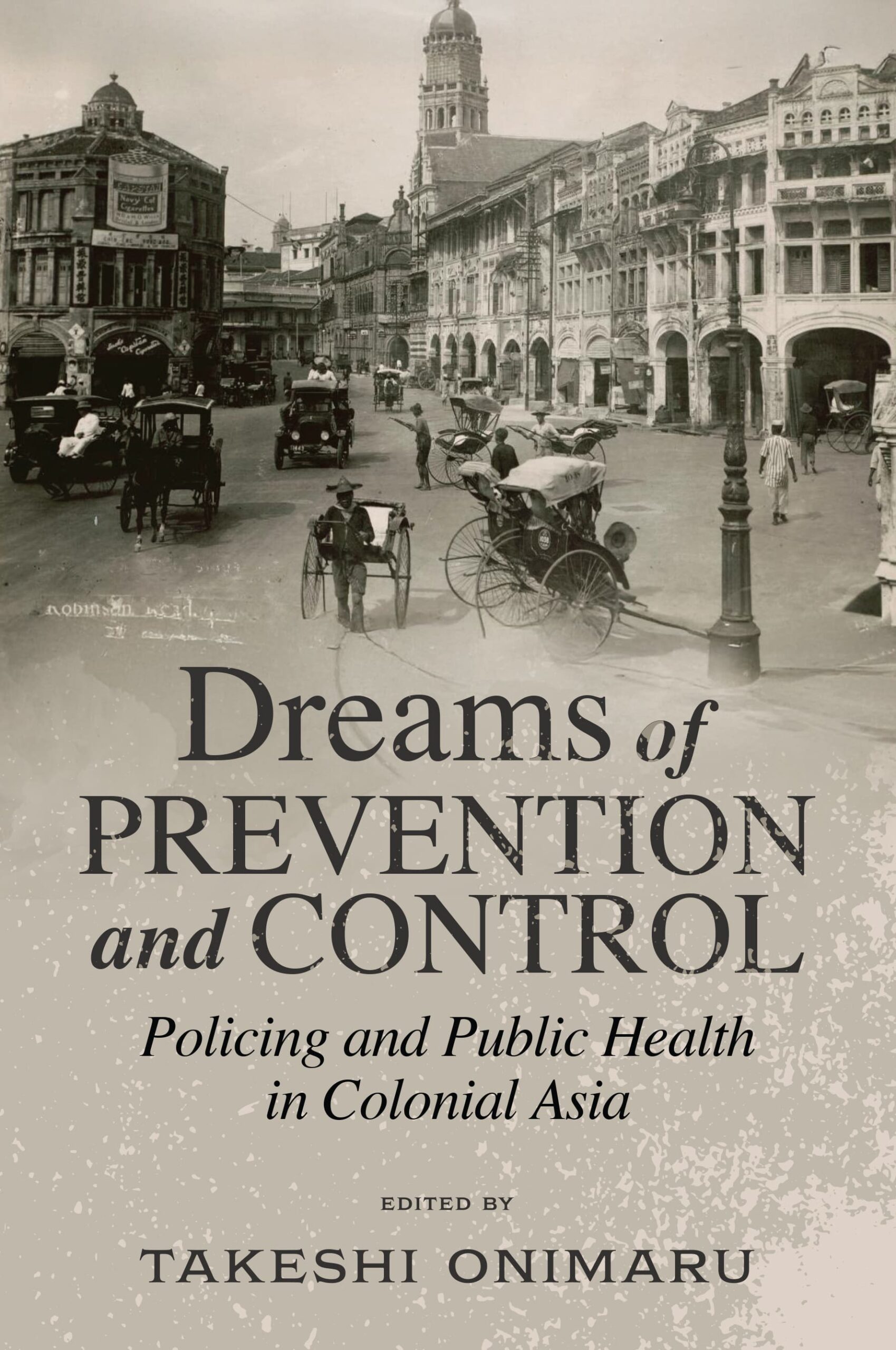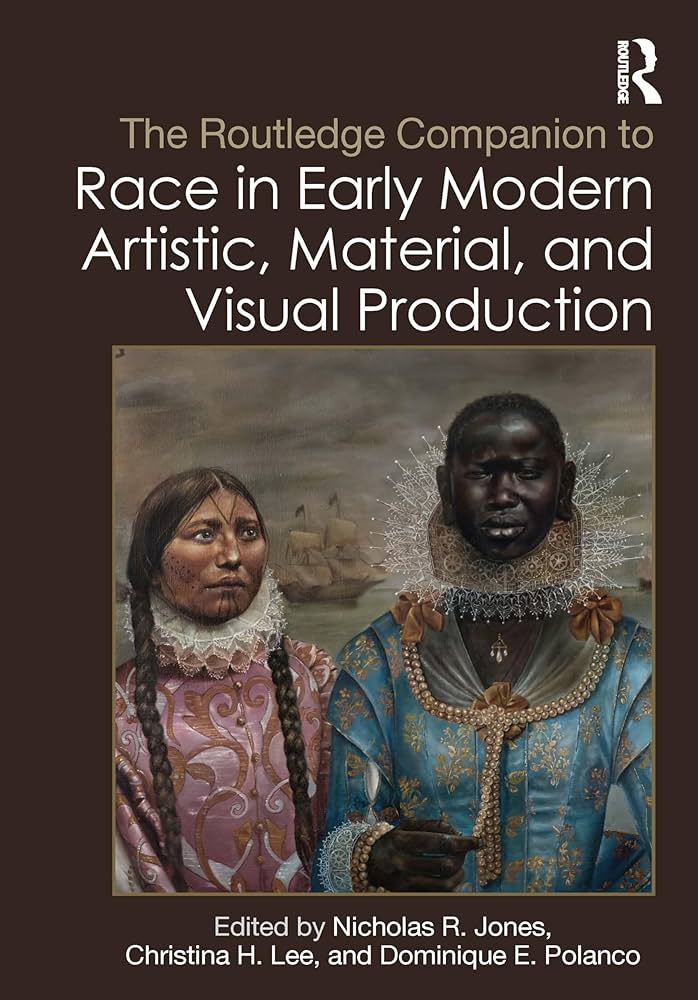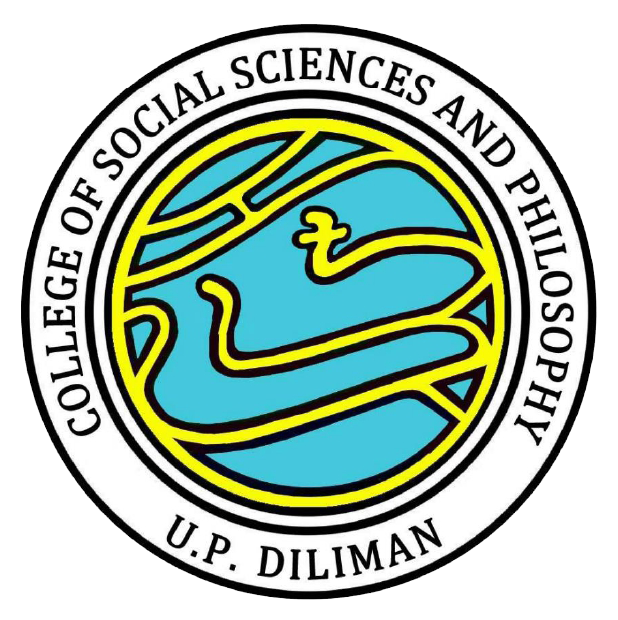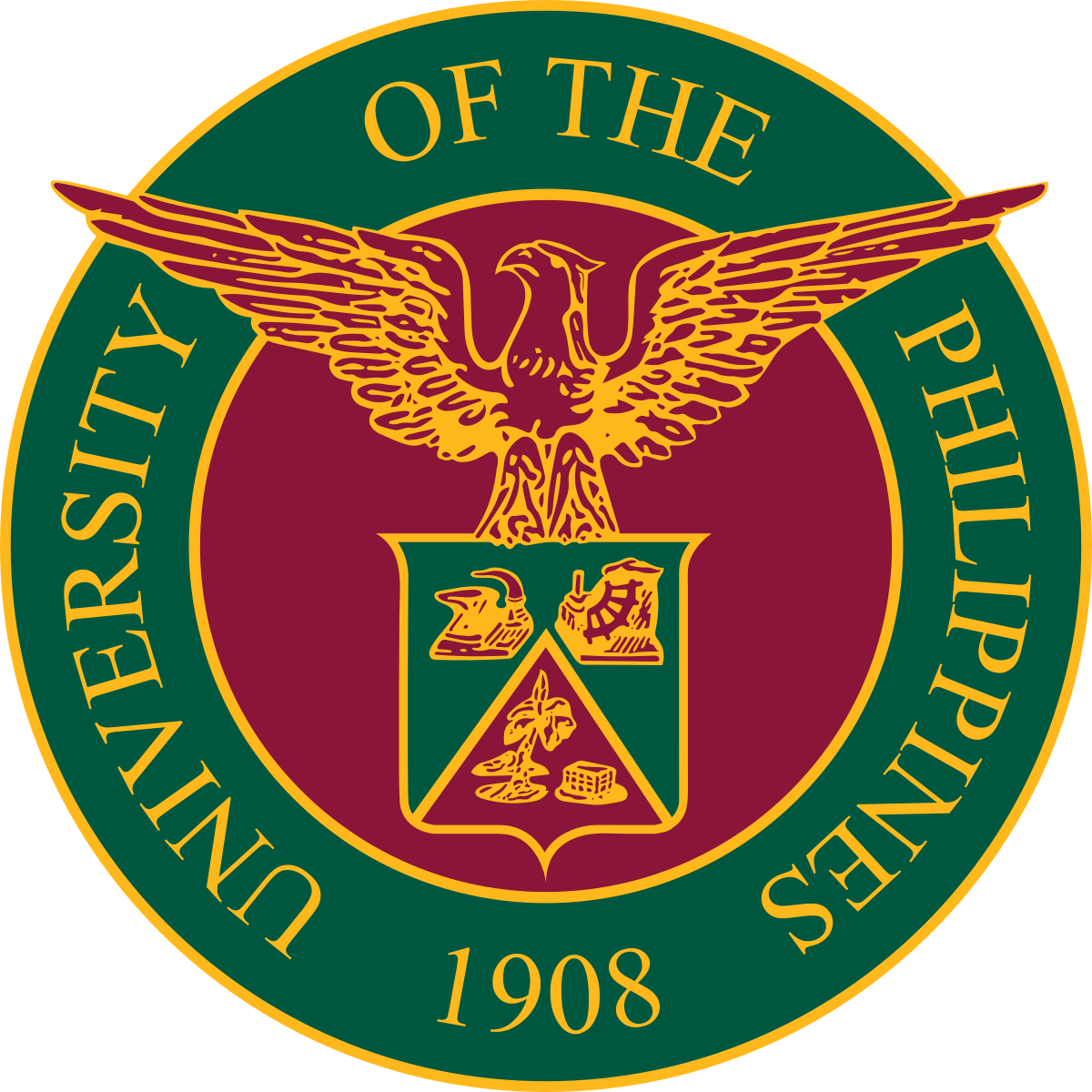Publications

The Diorama Experience of Philippine History
Jely A. Galang, Ph.D.,
Rhodalyn C. Wani-Obias, Ph.D.,
Janet S. Reguindin-Estella, Ph.D.,
Francisco Jayme Paolo A. Guiang,
The Diorama Experience of Philippine History. Ayala Museum opened to the public in 1974 with the goal of presenting the story of the Philippine nation under one roof, told in a selection of 60 handcrafted vignettes that made history come alive for generations of museum visitors. Today, the story is retold through the voices of 29 scholars from various fields of expertise in order to evoke to complexity of the stories of our archipelagic nation. The Diorama Experience of Philippine History is edited by Prof. Michael D. Pante of the Department of History, ADMU.
Four faculty members of the UP Department of History contributed chapters to this book. Prof. Jely A. Galang wrote the chapters "Trade with Chinese", "Massacre of the Chinese", and "Parian Scene." Asst. Prof. Rhodalyn C. Wani-Obias wrote the chapters "Pact of Biak-na-Bato" and "Court Martial of Andres Bonifacio." Asst. Prof. Janet S. Reguindin-Estella wrote "The Battle of Quingua," "Assassination of General Antonio Luna," and "Inauguration of Quezon." Asst. Prof. Francisco Jayme Paolo A. Guiang wrote "The Return of General Macarthur" and "Recognition of Philippine Independence by the United States."
Four faculty members of the UP Department of History contributed chapters to this book. Prof. Jely A. Galang wrote the chapters "Trade with Chinese", "Massacre of the Chinese", and "Parian Scene." Asst. Prof. Rhodalyn C. Wani-Obias wrote the chapters "Pact of Biak-na-Bato" and "Court Martial of Andres Bonifacio." Asst. Prof. Janet S. Reguindin-Estella wrote "The Battle of Quingua," "Assassination of General Antonio Luna," and "Inauguration of Quezon." Asst. Prof. Francisco Jayme Paolo A. Guiang wrote "The Return of General Macarthur" and "Recognition of Philippine Independence by the United States."

At gayon ma’y gumagalaw Modernong kaalaman, pulitikang kolonyal, at ang 'Trial of Galileo' ni Juan Luna
The Trial of Galileo (n.d., 58.5 x 105 cm, oil on canvas) is one of the works of Filipino painter Juan Luna (1857-1899), currently housed in the Jorge B. Vargas Museum and Filipiniana Research Center at the University of the Philippines Diliman, Quezon City, Philippines. It depicts the last part of the trial of the Italian scientist Galileo Galilei (1564-1642): on his knees, he reads the statement of abjuration, which renounced heliocentrism before the Roman Inquisition at the Convent of Santa Maria sopra Minerva in Rome, Italy, in 1633. Using Trial of Galileo, this article aims to settle “the relation between what we see and what we know” (Berger). Such attempt to clarify, in this case, is through “locating art in the context of time and space”—therefore, through art history, which “investigates the changes in the language of art, the structures of the art world, the ways of making and appreciating art” (Flores & De la Paz). Due to the lack of clear provenance of the painting, Trial of Galileo can be situated in how the ilustrados (Filipino intelligentsia) received modern science developed in Europe and how this history of science could be used by the Propaganda Movement in advancing political reforms. By linking Trial of Galileo to the scientific knowledge and political movement of the ilustrado propagandists, we can identify the “emancipative effects of scientific knowledge” in the so-called “Filipino Enlightenment” (Mojares).
Juan Luna
Trial of Galileo
Propaganda Movement
Filipino enlightement
Juicio a Galileo
Galileo
Movimiento de propaganda
Ilustración filipina

Inventing a People. Distorting the Images of Macabebe, 1899
This chapter reexamines the American photojournalistic documentation of the soldiers of Macabebe, Pampanga, in 1899 as an early form of disinformation about the Filipinos. These photos appeared in Jose de Olivares’ book, Our Islands and Their People as Seen with Camera and Pencil (1899), whose outright agenda was introducing the “Macabebes” to his American readers. Alongside these images were fictitious claims about the history of Macabebe and the townspeople’s motivation in supporting the Americans. At least four photographs of them in loincloths and with long hair were miscaptioned images of Tinguian warriors of the Cordillera. These Macabebe soldiers served the Spanish and American armies against the Philippine Revolutionary Forces from 1897 until the capture of First Philippine Republic President Emilio Aguinaldo in 1901. The townspeople of Macabebe were mistreated during the Aguinaldo administration, and this led the residents to ally themselves with the Americans. The photographs of the alleged Macabebes with garbled information were typical cases of distorting information by mislabeling photographs. The continuous proliferation of these images affects our understanding of Philippine history.
José de Olivares
Aztecs
Macabebe Scouts
Tinguians
Emilio Aguinaldo
Aztecas
Exploradores macabebe
Tinguianos

Independence and Public Health: Technologies of Rule in the Colonial Philippines, 1900–1930s
This article examines how the American colonial government in the Philippines implemented public health reforms as part of its so-called “civilizing mission” during the early 20th century. Dr. Planta explores the role of education, Filipino schoolchildren, and local medical professionals in advancing sanitation, hygiene, and nutrition—and how these efforts, while framed as preparation for independence, also exposed the inequities of colonial rule.
Highlighting the agency of Filipino health workers and the growing frustrations under American administration, this work offers important insights into the intersections of medicine and public health, governance, and the Filipino struggle for self-rule.
Highlighting the agency of Filipino health workers and the growing frustrations under American administration, this work offers important insights into the intersections of medicine and public health, governance, and the Filipino struggle for self-rule.

Indigenous datus' Constructions of Colonial Enslavement in the Philippines of Spain's Transpacific West
The extant work on Spain’s empire in Asia does not take distinctions between freedom and enslavement for granted. But while authors have recognized the existence of slaveries by other names, this chapter examines a case wherein Indigenous agents sought to narrowly call a slave a slave (an alipin an esclavo). At the seventeenth-century’s end, Indigenous elites from the island of Luzon (in today’s Philippine archipelago) argued for enslavement’s necessity in response to an imperial prohibition. They deployed fictional genealogies and murmurs of unrest to play up the crown’s anxieties at this westernmost reach of Spain’s India Occidental. Through overlaid guises of familial intimacy and colonial duty, they conflated ideas of race, religion, and enslavement for themselves and for their audiences. By the century’s end, colonial reducciones had disrupted settlement patterns key to local life cycles of dependence and autonomy, and Indigenous leaders now deployed violence, rather than benignity, to recover escapees. In opposition to the extant literature’s static understandings of the equivalence or inequivalence of the concept esclavo and the Indigenous concept alipin, this chapter examines the role that these Indigenous participants played in narrowing local asymmetrical dependencies into enslavement.

Bridging Science and Local Knowledge/Perception: A Case Study of Manila Bay Coastal Provinces (Philippines) After the 1988 Red Tide Episode
This study was the result of a grant funded by the UP Center for Integrative and Development Studies (CIDS) in 1996. Materials used for the red tide research included journal articles, technical papers, and media reports. Fieldwork was done in nine (9) coastal municipalities of Bataan and other coastal provinces of Manila Bay by conducting interviews and focused group discussions (FGDs) with fisherfolks, NGOs, scientists, and national and local government agency officials. This paper’s aims are four-fold: 1. Trace and narrate the events that transpired during the first occurrence of the red tide episode in Manila Bay. 2. Describe the reaction and response of the fisherfolk who were directly affected by the red tide ban, while the government and marine scientists were finding answers to the “new” hazard. 3. Narrate the scientists’ and government’s assessment and response to the 1988 Manila Bay red tide episode. 4. Discuss and analyze how the scientists, local government, and the public eventually bridged the disconnect in knowledge and the gap in communication during red tide outbreaks. The study concludes with recommendations on how best to reach and communicate to the public disaster terms couched in academic/scientific jargon and proposes steps on how to be inclusive in solving and mitigating disaster risk and response. Keywords: red tide, Bataan, Manila Bay, disasters, local knowledge/perception

A Woman, a Certain Sora
This is about all we know of Melchora Aquino. I do not mean to trivialize her life; my point is, rather, the opposite. These bare facts raise questions yet unanswered, such as: What drove Melchora, at the age of 84, to participate in the revolution? How id she develop her political consciousness? Did she study? What explains her resoluteness?
I ask these questions because Melchora presents an intriguing case of an unusual woman, for we know of no others in their eighties who also risked their lives for the cause of freedom.How can a woman so rare occupy such a miniscule space in our historic past?
I ask these questions because Melchora presents an intriguing case of an unusual woman, for we know of no others in their eighties who also risked their lives for the cause of freedom.How can a woman so rare occupy such a miniscule space in our historic past?

Road to Political Empowerment: Women’s Organizations and the Fight for Suffrage (1905-1937)
The early 20th century saw a significant shift in the lives of Filipino women. The transition from Spanish to American colonial rule altered women's social and political roles, providing them with better opportunities. Suffragist and historian Encarnacion Alzona (1934) attributed this to the American regime's educational policy, which resulted in women's "complete emancipation, political and civil." Certainly, American colonial policy provided women with a voice in the public sphere, as well as opportunities to lead, particularly in education and civic work (Roces, 2001). But while there were significant changes in women's rights during this period, patriarchal values persisted, posing a challenge to women, particularly in their fight for suffrage.
The struggle for women’s suffrage was one of the most crucial battles that women faced in the early 20th century. Women gradually made their way into politics, despite opposition from various conservative groups. They began by expanding their roles as mothers through community service. They established socio-civic groups, which made a significant impact on their struggle for political engagement.
This paper attempts to highlight the contribution of women’s organizations in the quest for women’s suffrage which will be granted to Filipino women by 1937. Transitioning from the Spanish colonial tradition that confined women at home and church, the 20th century created a more liberal atmosphere that allowed them to extend their important roles in the public and political spheres. Initiated by influential women with family and social connections, this study examines the political involvement of women, which began with their socio-civic activities and culminated with the granting of women suffrage in 1937.
The struggle for women’s suffrage was one of the most crucial battles that women faced in the early 20th century. Women gradually made their way into politics, despite opposition from various conservative groups. They began by expanding their roles as mothers through community service. They established socio-civic groups, which made a significant impact on their struggle for political engagement.
This paper attempts to highlight the contribution of women’s organizations in the quest for women’s suffrage which will be granted to Filipino women by 1937. Transitioning from the Spanish colonial tradition that confined women at home and church, the 20th century created a more liberal atmosphere that allowed them to extend their important roles in the public and political spheres. Initiated by influential women with family and social connections, this study examines the political involvement of women, which began with their socio-civic activities and culminated with the granting of women suffrage in 1937.

Sweet Hopes and Delightful Longings”: Motherhood in Early Twentieth Century Philippines.
While women have largely remained marginalized in Philippine history, an increasing number of works in recent decades have underscored their roles in the “public sphere”, participating in broad historical processes such as the Philippine Revolution, the women’s suffrage movement in the 1930s, and the Second World War, to name a few. Despite the generally accepted views that women were made for motherhood by virtue of their biology, their role as a mother in the more “private sphere” such as the home, has eluded examination and remain unexplored.
In this paper, I interrogate the concept of motherhood as it is presented and constructed in early twentieth century Philippine magazines such as the Revista Filipina and The Philippine Magazine. Through the representations of motherhood found in these magazines, I analyze societal expectations and norms imposed on women and explore how the Filipino woman in the early twentieth century stood at the brink of emerging contestations between traditional perspectives of domesticity and liberal views of modernity.
In this paper, I interrogate the concept of motherhood as it is presented and constructed in early twentieth century Philippine magazines such as the Revista Filipina and The Philippine Magazine. Through the representations of motherhood found in these magazines, I analyze societal expectations and norms imposed on women and explore how the Filipino woman in the early twentieth century stood at the brink of emerging contestations between traditional perspectives of domesticity and liberal views of modernity.

Illegal Immigration and Chinese Transnational Networks in Southern Philippines, 1850–1898
This chapter explores the illegal immigration of Chinese in southern Philippines from 1850 to 1898. During the second half of the nineteenth century, the Spanish colonial government in the Philippines implemented policies aimed at controlling illegal Chinese immigration in the southern part of the colony. Although most Philippine Chinese would disembark at the port of the colonial capital of Manila, authorities were aware of the unregulated movement of the Chinese in Mindanao and Sulu that posed a threat to the colony’s political, military and economic stability. Chinese immigrants from Singapore, Labuan, Sandakan and other islands in the region provided commodity goods, arms and ammunition to local inhabitants and leaders such as the Sulu Sultan. Set against colonial conditions, this chapter examines the way that transnational networks in maritime Southeast Asia played a role in this illicit movement of people. Utilising Philippine and Spanish archives, it describes and analyses actors, institutions and processes operating in the Philippines and elsewhere that made this scheme possible, and from the state’s view, challenging to manage. This chapter contributes to an understanding of the creative ways of Chinese immigrants’ evasion of state regulations to engage freely in local and transnational activities.
Chinese
Philippines
Illegal migration
Sulu
Mindanao
| Title | Book | Faculty Involved | Keywords | Year |
|---|---|---|---|---|
| The Diorama Experience of Philippine History | The Diorama Experience of Philippine History | Jely A. Galang, Ph.D., Rhodalyn C. Wani-Obias, Ph.D., Janet S. Reguindin-Estella, Ph.D., Francisco Jayme Paolo A. Guiang | 2025 | |
| At gayon ma’y gumagalaw Modernong kaalaman, pulitikang kolonyal, at ang 'Trial of Galileo' ni Juan Luna | The Filipino worldview through art, images, and objects. From indigenous cultures to the 19th century | Emmanuel Jayson V. Bolata | Juan Luna, Trial of Galileo, Propaganda Movement, Filipino enlightement, Juicio a Galileo, Galileo, Movimiento de propaganda, Ilustración filipina | 2025 |
| Inventing a People. Distorting the Images of Macabebe, 1899 | The Filipino worldview through art, images, and objects. From indigenous cultures to the 19th century | Ian Christopher B. Alfonso, Ph.D. | José de Olivares, Aztecs, Macabebe Scouts, Tinguians, Emilio Aguinaldo, Aztecas, Exploradores macabebe, Tinguianos | 2025 |
| Independence and Public Health: Technologies of Rule in the Colonial Philippines, 1900–1930s | Dreams of Prevention and Control: Policing and Public Health in Colonial Asia | Ma. Mercedes G. Planta, Ph.D. | 2025 | |
| Indigenous datus' Constructions of Colonial Enslavement in the Philippines of Spain's Transpacific West | The Routledge Companion to Race in Early Modern Artistic, Material, and Visual Production | Nicholas Michael C. Sy | 2025 | |
| Bridging Science and Local Knowledge/Perception: A Case Study of Manila Bay Coastal Provinces (Philippines) After the 1988 Red Tide Episode | Scientists and the Establishment of a Mass Environmental Awareness (1950-1990) | Ma. Luisa De Leon-Bolinao, Ph.D. | 2025 | |
| A Woman, a Certain Sora | More Pinay Than We Admit 2: The Filipinas Emerges from the Margins | Maria Serena I. Diokno, Ph.D. | 2025 | |
| Road to Political Empowerment: Women’s Organizations and the Fight for Suffrage (1905-1937) | More Pinay Than We Admit 2: The Filipinas Emerges from the Margins | Janet S. Reguindin-Estella, Ph.D. | 2025 | |
| Sweet Hopes and Delightful Longings”: Motherhood in Early Twentieth Century Philippines. | More Pinay Than We Admit 2: The Filipinas Emerges from the Margins | Rhodalyn C. Wani-Obias, Ph.D. | 2025 | |
| Illegal Immigration and Chinese Transnational Networks in Southern Philippines, 1850–1898 | Transnational Southeast Asia: Communities, Contestations and Cultures | Jely A. Galang, Ph.D. | Chinese, Philippines, Illegal migration, Sulu, Mindanao | 2025 |
| Optics, Illusions, and Historical Philippine Populations | Everyday Life in the Philippines, 1657–1699 | Nicholas Michael C. Sy | 2025 | |
| Wills of the Dead: Inheritance and Other Legacies in Early Modern Philippines | Everyday Life in the Philippines, 1657–1699 | Grace Liza Y. Concepcion, Ph.D. | 2025 | |
| Navigating Legal Frontiers: Spanish consulates in Singapore and Hong Kong in the second half of the nineteenth century | Redes Consulares en el Mar de China. Cónsules extranjeros en Filipinas Cónsules españoles en China | Ros A. Costelo, Ph.D. | 2024 | |
| Colonias Entrelazadas: Filipinas y el Establecimiento de los Consulados Españoles en Singapur y Hong Kong en la Segunda Mitad del Siglo XIX | Cónsules e Imperios El establecimiento de consulados extranjeros en las Filipinas del Siglo XIX | Ros A. Costelo, Ph.D. | 2023 | |
| Indigenous Landowners in the 17th-century Philippines. | 1521 Revisited: The Quincentennial Commemorations in the Philippines, volume III, 184-200 | Grace Liza Y. Concepcion, Ph.D. | Land ownership, 17th century, land dispute, land sale, Philippines | 2023 |
| Lo que entra por la boca no hace daño al alma: food, sailors, and the seventeenth-century Spanish Pacific | Sincronías Barrocas (Siglos XVI-XVIII): Agentes, textos y objetos entre Iberoamérica, Asia y Europa | Kristyl N. Obispado, Ph.D. | Sailors’ food, seventeenth century, Pacific sailor, heresy, Spanish empire | 2023 |
| Cabecilla principal de sangleyes and Chinese immigration in the late- eighteenth century Philippines | Sincronías Barrocas (Siglos XVI-XVIII): Agentes, textos y objetos entre Iberoamérica, Asia y Europa | Jely A. Galang, Ph.D. | Chinese laborers, cabecilla principal, immigration, Manila | 2023 |
| Paramount Yet Frontier: A Historiographical Appraisal of Select 18th-Century Philippine Geological Disasters | Sincronías Barrocas (Siglos XVI-XVIII): Agentes, textos y objetos entre Iberoamérica, Asia y Europa | Kerby C. Alvarez, Ph.D. | Earthquakes, volcanic eruptions, eighteenth-century Philippines, historical disasters, Philippine colonial history | 2023 |
| Si Rene O. Villanueva sa Panimulang Yugto ng Pag-akda para sa Bata, 1977-1986 | Bata, Hiwaga, Bansa: Pamana ni Rene O. Villanueva sa Panitikang Pambata | Emmanuel Jayson V. Bolata | Rene Villanueva, panitikang pambata, kasaysayang pampanitikan | 2023 |
| The Czechs in the Philippines in World War II | Kaibigan-Prátelé: Czech-Philippines | Ricardo T. Jose, Ph.D. | 2023 | |
| Surviving Obscurity: An Inquiry into the Malisbong Massacre (1974–2013) | The Marcos Years: The Age of Crisis and Repression | Lorenzo Jose C. Martinez | 2023 | |
| To Struggle and Triumph: Maria Cristina V. Rodriguez’s Life during the Martial Law Years | The Marcos Years: The Age of Crisis and Repression | Francisco Jayme Paolo A. Guiang | 2023 | |
| Introduction: Storytelling and Academic Study: Toward a Memory of Dictatorship | The Marcos Years: The Age of Crisis and Repression | Ferdinand C. Llanes, Ph.D. | 2023 | |
| Foundations of Philippine Environmentalism: Science, Citizenship, and Nationhood | Philippine Studies: Plural Entanglements | Ruel V. Pagunsan, Ph.D. | 2023 | |
| Textiles and Other Trade Goods: The Philippines in the Sixteenth-Century Global Trade | Philippine Studies: Plural Entanglements | Kristyl N. Obispado, Ph.D. | 2023 | |
| Emergence of "Undesirable" and "Proletariat" Chinese in the Nineteenth-Century Philippines. | Philippine Studies: Plural Entanglements | Jely A. Galang, Ph.D. | 2023 | |
| The case of the dead sailors and the things they left: A microhistorical analysis of the Carrera del Pacífico in the sixteenth century | Europa y América: el mar y la primera globalización, Colección Historia Medieval y Moderna | Kristyl N. Obispado, Ph.D. | Carrera del Pacífico, dead sailors, microhistory, labor, global trade goods | 2023 |
| Rizal’s Project: Historical Reconstruction of the Philippine Past | 1521 Revisited: The Quincentennial Commemorations in the Philippines Volume 2 | Kerby C. Alvarez, Ph.D. | 2023 | |
| Populist authoritarianism against the ‘Firewall’ of rights and due process | The Volatility and Future of Democracies in Asia | Maria Serena I. Diokno, Ph.D. | 2022 | |
| Colonial Civil Engineers and the Inspección General de Obras Públicas 1866-1898 | Transforming the 19th Century Philippines | Ros A. Costelo, Ph.D. | 2022 | |
| Lunas ng Taong-Labas sa Kontemporanyong Panahon: Ang Tawak at Tandok ng Marinduque | Taong-Labas: Ang Tulisan, Remontado, at Vagamundo sa Kasaysayan at Kalinangang Pilipino | Emmanuel Jayson V. Bolata | Marinduque, Tawak, Tandok, Lala, Bisa | 2022 |
| Protestante Man, Lumaban Din: Ang Paninindigan ng Convention of Philippine Baptist Churches (CPBC) Laban sa Diktadurang Marcos | Taong-Labas: Ang Tulisan, Remontado, at Vagamundo sa Kasaysayan at Kalinangang Pilipino | Kristoffer R. Esquejo, Ph.D. | 2022 | |
| Ati, Bukidnon, at Agraviados: Ang Taong-Labas at Paglikha ng Panghimagsikang Tradisyon sa Isla ng Panay | Taong-Labas: Ang Tulisan, Remontado, at Vagamundo sa Kasaysayan at Kalinangang Pilipino | Vicente C. Villan, Ph.D. | 2022 | |
| Disease, Death, and Destruction: Dante and Boccaccio's Second Coming and Interstices of Filipino Reception | Himaya: Panitikan ng Pagbabanyuhay | Emmanuel Jayson V. Bolata | Dante, Boccaccio, Filipino reception, COVID-19, loob | 2022 |
| Policing the Chinese: tenientes Mayores de Chinos and ‘Undesirable’ Chinese in the Philippines, 1870-1898 | Philippines–China Relations at 45 During the COVID-19 Pandemic: New Discoveries, Recent Developments, and Continuing Concerns | Jely A. Galang, Ph.D. | 2021 |


